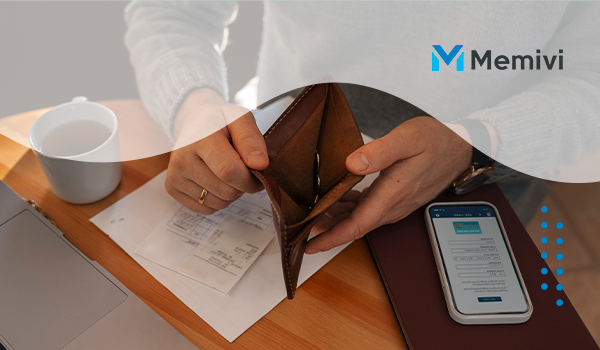
If you’re struggling to pay off credit card debt in Canada, you’re not alone. Many Canadians face high-interest credit card balances that are difficult to manage. But don’t worry – with the right strategies and tools, you can regain control of your finances. In this blog post, we’ll explore effective debt repayment strategies, help you understand your credit card debt better, and introduce you to valuable tools and resources available for Canadians.
Understanding Your Credit Card Debt
To tackle your credit card debt, the first step is understanding the components that make it up. Credit card debt typically arises from purchases that haven’t been paid in full by the end of the billing cycle. Once a balance is carried over, it begins to accrue interest, leading to increased amounts owed over time. High-interest rates significantly contribute to rising debt if not managed properly.
Furthermore, late fees can quickly add up, exacerbating the problem. It’s essential to account for these fees in your budget to prevent falling deeper into debt. The credit limit is another factor to watch. Overspending beyond the credit limit can result in additional penalties and negatively impact your credit score.
Minimum Payments
While making minimum payments may seem manageable, it’s important to note that this approach primarily covers the interest, doing little to reduce the principal balance. Over time, this can extend the payment period and increase the total amount paid. Recognizing the impact of minimum payments helps in strategizing more effective payment plans.
Your credit utilization ratio, which is the amount of debt compared to the credit limit, also plays a critical role. A high utilization ratio may affect your credit score and your ability to secure loans with favorable rates. By maintaining a balance below 30% of the total credit limit, you can improve your credit profile.
Understanding these aspects helps in creating a more effective debt repayment strategy, stepping closer to financial freedom. Having a comprehensive grasp on the specifics of your credit card debt can lead to better financial decisions and avoidance of additional charges.
Effective Debt Repayment Strategies
When tackling credit card debt in Canada, it’s essential to adopt effective repayment strategies to regain financial control. One successful approach is the avalanche method, which focuses on paying off the debt with the highest interest rate first while making minimum payments on others. This method not only reduces the total interest paid but also helps you eliminate debts faster.
Another popular method is the snowball strategy. Here, you pay off the smallest debt first, which can boost motivation and create a snowball effect as you tackle larger debts with increased momentum. Once the smallest debt is cleared, redirect those funds to the next smallest debt, continuing the cycle.
Consider the balance transfer option, where you can move high-interest credit card balances to a card with a low or 0% introductory rate. This can save significant interest costs in the short term. Make sure to plan for the end of the introductory period and any transfer fees.
Canadians may also explore debt consolidation loans as a strategy. This involves combining multiple debts into a single loan with potentially lower interest rates, simplifying payments. This method requires discipline to avoid accumulating new debts.
Finally, creating a budget plan is crucial to manage spending and allocate more funds towards debt repayment. Identify areas where you can cut costs and dedicate those savings to your debt reduction efforts. Consistent monitoring and adjustment of your budget can significantly impact your progress.
Tools and Resources for Canadians
Canadians have access to a variety of tools and resources that can significantly aid in managing and paying off credit card debt. These resources are designed to provide support and guidance, helping to relieve the stress associated with debt repayment.
1. Budgeting Apps
One of the most effective tools is a budgeting app. Apps like Mint and YNAB (You Need a Budget) allow you to track your spending, manage your income, and set realistic financial goals. They provide insights into where your money is going and where you can cut back. Many Canadians find these apps indispensable for maintaining financial discipline.
2. Credit Counseling Services
Organizations such as the Credit Counselling Society or Consolidated Credit Counseling Services of Canada offer educational programs and personal counseling. These services help you understand your financial situation, create a plan to reduce debt, and offer negotiation assistance with creditors.
3. Debt Management Programs
A Debt Management Program (DMP) can be a practical solution for those struggling to make payments. Through a DMP, you can consolidate your payments into one monthly payment, often with reduced interest rates. This makes managing debt more manageable.
4. Online Calculators
Online debt repayment calculators are powerful tools to visualize your path to debt freedom. By inputting your debt amounts, interest rates, and monthly payments, these calculators show how long it will take to pay off your debts and can help optimize your payment strategies.
5. Government Resources
The Canadian government provides various resources through agencies like the Financial Consumer Agency of Canada, which offers financial tools and calculators, educational materials, and guidelines for debt management.
By taking advantage of these resources and tools, Canadians can make informed decisions and tackle their credit card debt effectively.


 Best HISA Rates Canada 2025: Discover Top Options
Best HISA Rates Canada 2025: Discover Top Options  US Tariffs on Canada: Investment Impact Unveiled
US Tariffs on Canada: Investment Impact Unveiled  Portfolio Diversification Canada: Maximize Your Wealth Today
Portfolio Diversification Canada: Maximize Your Wealth Today